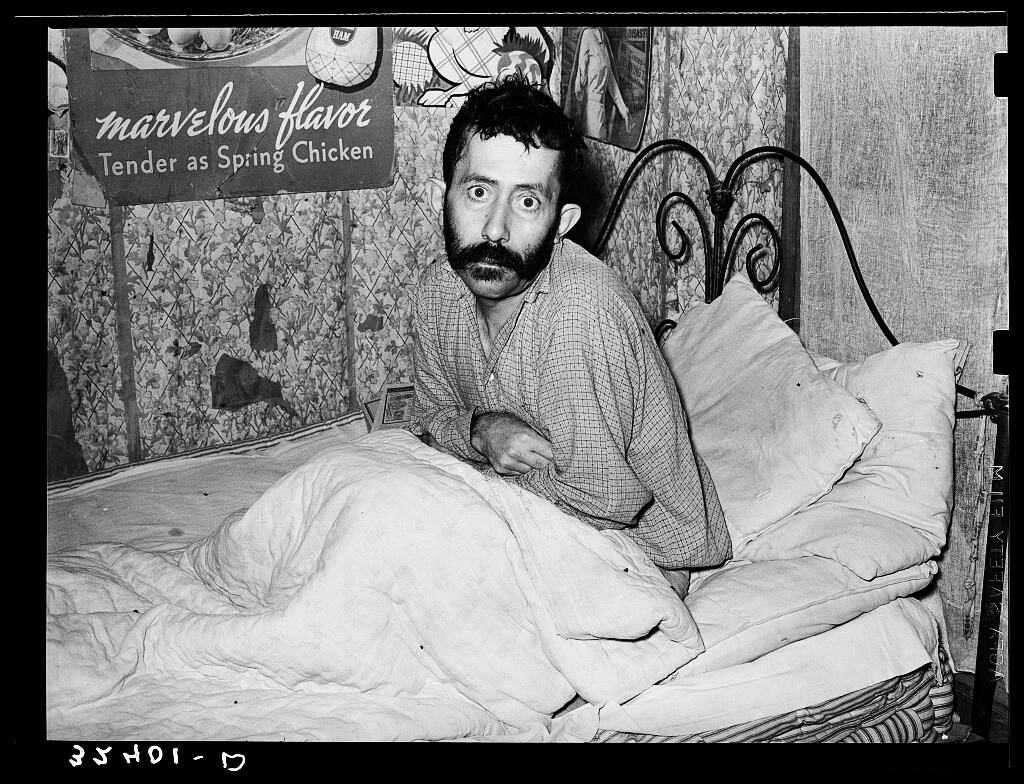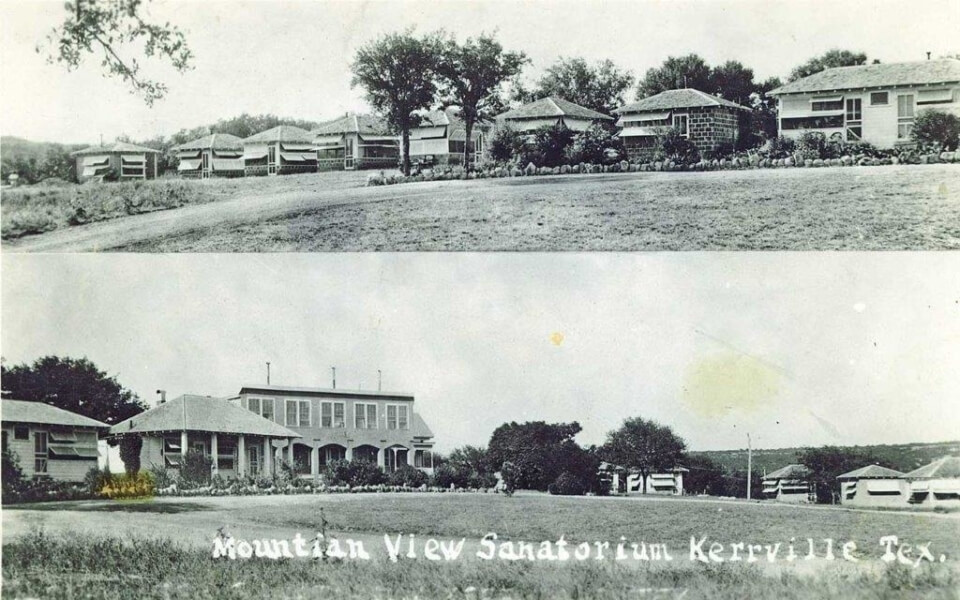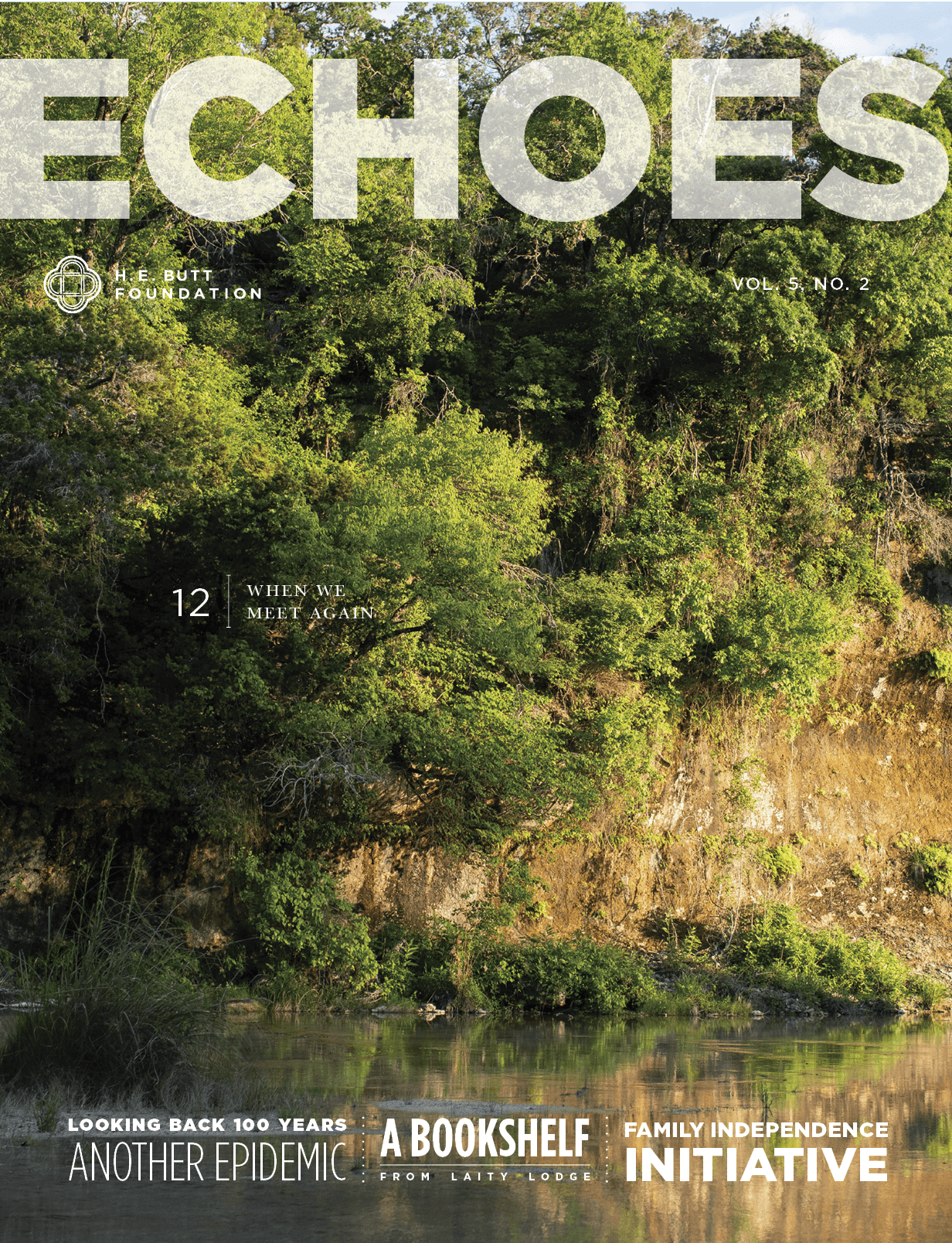
In 1905, Howard Butt Sr. was a ten-year-old boy in Tennessee, and his father, C. C. Butt, was dying of tuberculosis. Not much was known about the disease, which many people still called “consumption.” They fought it by staying healthy and strong, breathing dry mountain air, and eating well.
But make no mistake: TB was an epidemic. At the time Howard’s father became ill, the disease was on its way to killing one out of every seven people in the United States and Europe, according to the Centers for Disease Control. (By comparison, the Spanish Flu killed one out of every 100 people.) An antibiotic treatment wouldn’t be developed until 1943.
Soon, Howard’s parents moved across the country to Kerrville, a small town on the Guadalupe River advertising itself as a “mecca for health seekers,” a new sanitarium in the “Texas Alps.” Howard’s father lived for ten more years in the Kerrville TB community, where tent cities of “lungers” evolved into the area’s first tuberculosis treatment hospital, Mountain View Sanitarium. It opened in 1915, the year Howard’s father died. Howard was just 19 years old.

By that time, his older brother, “C.C.” Butt, may have already been showing signs of the illness. Ten years later—after Howard’s stint in the navy during World War I, his wedding to Mary Holdsworth, and his first expansions of the family grocery business—his brother also succumbed to the disease.
Howard Butt’s childhood and young adulthood were defined by the epidemic that took his father and brother. He responded by making Texas his sanitarium—getting out in the fresh air on ranches, taking up outdoor sports like tennis, and swimming whenever and wherever he could. According to local legend, he used to swim laps across the river in downtown Kerrville year-round.
The Butts were not satisfied with only improving their own health.
“We have no right to live to ourselves alone,” Howard wrote to Mary Holdsworth after their engagement. “May God grant that our united life may be felt as a great and lasting good in our community.” He was 29 years old.
One expression of great and lasting good was the building of tennis courts and swimming pools in communities stretching from San Antonio to Harlingen.
The plan began in 1933—the height of the Great Depression—as the Butt family grocery store was expanding all over Texas, from Corpus Christi to Del Rio. Once a grocery store reached a certain level of profitability in its community, the Butts offered to help or sometimes fully fund a community pool or a tennis court.
There was just one catch. The health centers would serve everyone, regardless of race.
Although the Foundation Archives do not include any legal documents to verify the requirement, it is consistent with other efforts the Butts were making at that time.
When Howard and Mary Holdsworth Butt created the H. E. Butt Foundation in 1934, they had an expansive sense of mission—and who the mission was for. Mary Holdsworth created a range of nonprofits from her dining table, from literacy and library services, to mental healthcare and tuberculosis treatment. These resources were for anyone in need.
Long before the civil rights movement, she created resources and opportunity for people regardless of ethnic background. Her struggle, she noted, was “against the age-old prejudice against people who are in any way different.”
The Butts’ various efforts to care for the Texas of their time ultimately led to the 1954 opening of the H. E. Butt Foundation Camp.
Communities of need were on their minds as the couple searched for a property that might become the camp.

A hand-colored lithograph from a 1922 public awareness campaign (via Library of Congress).
“We hope to find one [property] with several hundred acres, with rock buildings to care for at least 100 children at once,” Mrs. Butt wrote in a 1953 journal entry. One year later, the H. E. Butt Foundation Camp welcomed its first first group, including students from Flour Bluff in Corpus Christi, who came for outdoor school.
This summer marks the first time in our history that the H. E. Butt Foundation Camps lie fallow, as we take extra caution not to contribute to another epidemic, COVID-19. To young campers and their parents who feel the loss so deeply, there is some consolation in the long history of the Foundation Camps.
These two connections—the fight against TB and the struggle against prejudice—both seem especially relevant just now. COVID-19 disrupts all of our lives, but it’s hitting black and brown communities especially hard. Continued disparities in education, housing, jobs, and levels of stress raise the level of risk for those communities, making them more vulnerable to the virus.
That’s a challenging reality. But it’s also a reminder of the continued urgency of our mission: to cultivate wholeness in people and institutions for the transformation of communities. And it’s a reminder of our legacy, when a family chose to devote its attention to the very people others tended to neglect.
